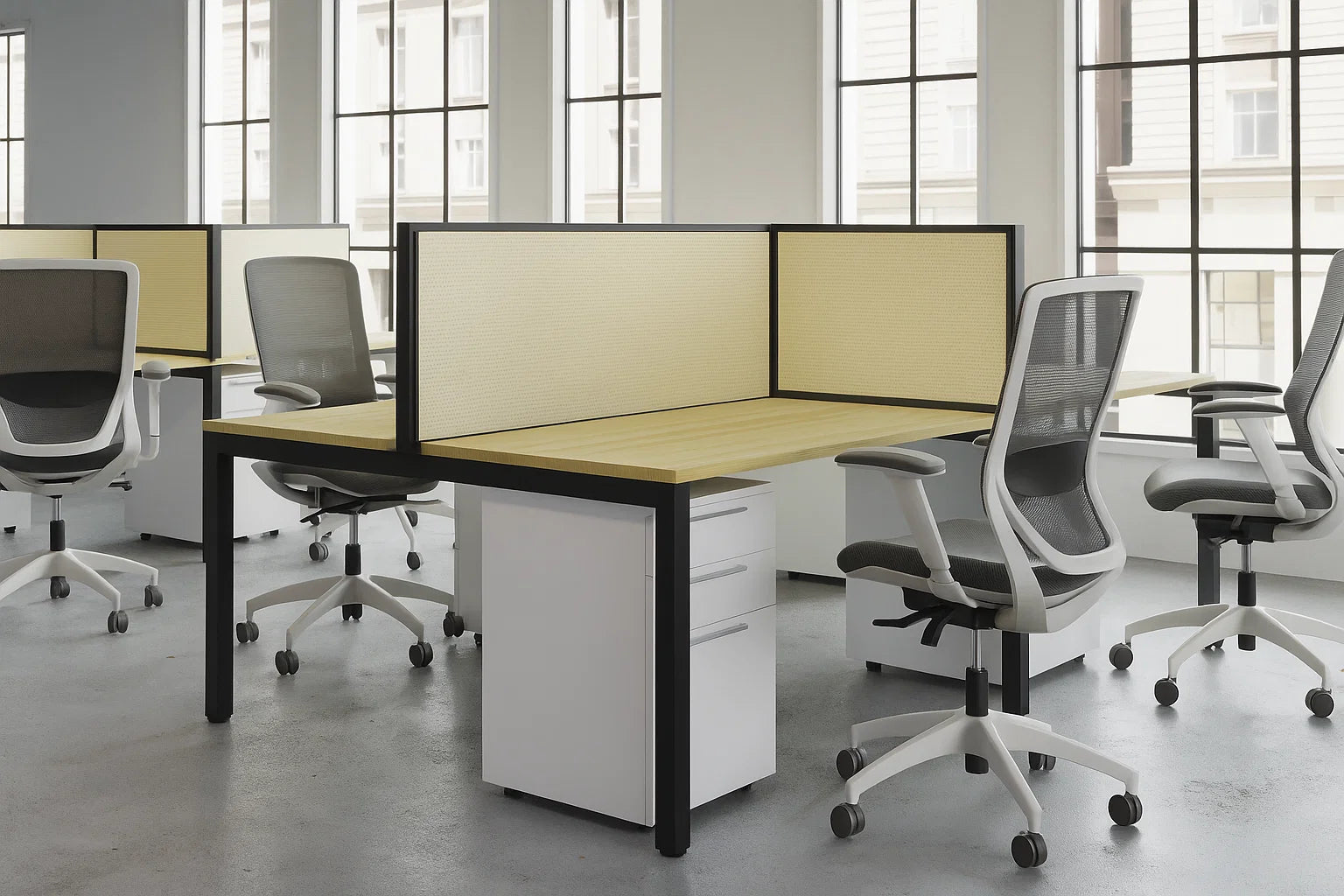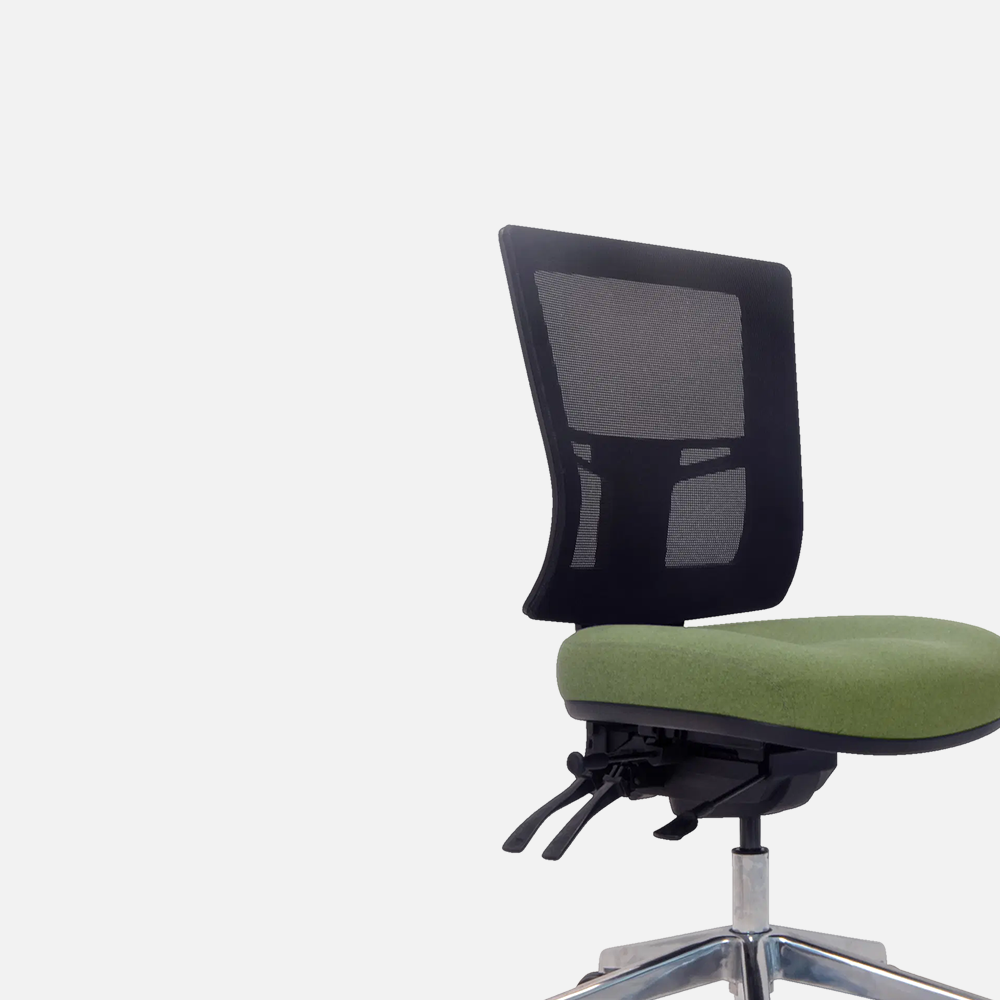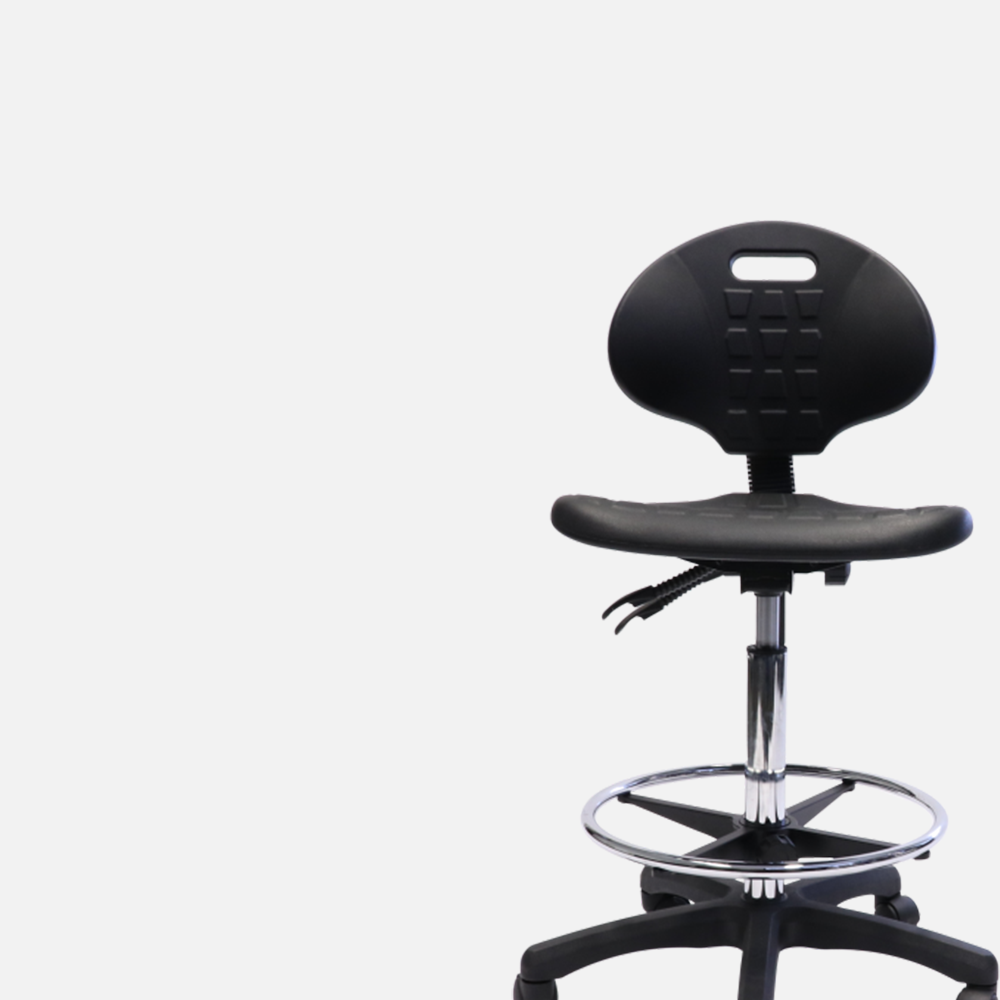Introduction
Ever noticed how a good chair can make or break your workday? Prior to working in the industry, I used to underestimate just how much a well-designed chair impacts comfort, focus, and productivity.
In today’s evolving work environments — from hybrid setups to bustling government offices — choosing the right ergonomic office chair is no longer optional. It’s essential for protecting staff wellbeing, meeting Australian safety standards, and driving business performance.
In this guide, we’ll explore the top seven features to prioritise when buying an ergonomic office chair in Australia. Whether you’re procuring for a government department, education institution, or business, you’ll find expert insights to guide your decision.
Why Ergonomic Chairs Matter for Australian Workplaces
It’s no secret that sedentary work is linked to higher risks of musculoskeletal disorders (MSDs), cardiovascular issues, and mental health impacts.
According to Safe Work Australia, over 50% of serious workplace injury claims are due to MSDs. The humble office chair plays a significant role in either exacerbating or mitigating these risks.
Benefits of investing in the right ergonomic chairs include:
- Reduced risk of MSDs and injury claims
- Improved posture, circulation, and energy
- Enhanced productivity and concentration
- Increased staff morale and retention
- WHS compliance (under Australian WHS legislation)
Before we dive in, remember this: not all “ergonomic” chairs are truly ergonomic. Look beyond marketing buzzwords and focus on these proven features.
1. AFRDI Level 6 Certification for Commercial Use
The first box to tick is standards compliance.
In Australia, the gold standard for ergonomic office chairs is:
- AS/NZS 4438:1997 — Height Adjustable Swivel Chairs
- AFRDI Level 6 Blue Tick Certification
Why it matters:
- AFRDI Level 6 ensures the chair has passed rigorous testing for durability, stability, adjustability, and user fit.
- It is designed for 8+ hour daily use in commercial and public sector workplaces.
- It provides confidence that your investment will support WHS compliance.
Look for AFRDI Level 6 certified ergonomic task chairs.
2. Adjustable Lumbar Support
Back pain is the most common complaint among office workers — and lumbar support is your frontline defence.
Key considerations:
- The lumbar support should be height adjustable to accommodate different body sizes.
- It should provide firm, contoured support for the natural curve of the lower back.
- Chairs with dynamic lumbar systems that adjust as you move offer superior support.
In our comprehensive research report, adjustable lumbar support consistently ranked as a top factor influencing comfort and injury prevention.
3. Seat Height and Seat Depth Adjustment
It might sound basic, but seat height and seat depth are critical for promoting healthy sitting posture.
Look for:
- Gas lift seat height adjustment to allow knees to rest at a 90-degree angle.
- Seat depth adjustment (also called seat slider) to ensure proper thigh support without compressing the back of the knees.
- Adequate seat depth range to fit both petite and taller users.
This adjustability ensures your chairs can accommodate Australia’s increasingly diverse workforce.
4. Backrest Tilt and Synchro-Tilt Mechanism
A static chair equals static posture — a recipe for discomfort and injury.
The solution? Backrest tilt and synchro-tilt mechanisms that encourage movement and dynamic sitting.
Key features:
- Synchro-tilt allows the backrest and seat to move in harmony, maintaining ergonomic alignment.
- Adjustable tension control enables users to customise the level of resistance.
- Tilt lock lets users lock the chair in different positions if desired.
Research shows that chairs promoting micro-movements help improve circulation, reduce fatigue, and support musculoskeletal health.
5. Adjustable Armrests
Many overlook this, but armrests matter — a lot.
Poorly designed or non-adjustable armrests can:
- Cause neck and shoulder tension
- Force unnatural wrist angles
- Increase risk of upper limb MSDs
Prioritise armrests that are:
- Height adjustable to allow relaxed shoulders
- Width adjustable to fit varying body types
- Optionally pivoting for task flexibility
In shared spaces like hot-desking environments or education settings, full armrest adjustability is a must.
6. Breathable and Supportive Seat Materials
Australian offices can vary wildly in temperature — from air-conditioned high-rises to regional council chambers.
Choose seat materials that offer:
- Breathability to prevent heat build-up
- Resilience and proper support (avoid cheap foam that compresses quickly)
- Durability for commercial wear and tear
Mesh backs combined with high-density seat foams are often ideal for the Australian climate and long workdays.
7. Fit-for-Purpose Design
Finally — choose a chair that is designed for your organisation’s unique needs.
Examples:
- For councils and government departments → heavy-duty chairs rated for 135+ kg with AFRDI 142 certification.
- For education settings → chairs with intuitive, easy-to-use adjustments to accommodate students and staff turnover.
- For hybrid workforces → chairs with lightweight frames and portability for home-office transitions.
Don’t default to a one-size-fits-all approach. Match the chair’s features to your sector and workforce needs.
FAQs
What is the best ergonomic chair standard in Australia?
AFRDI Level 6 Blue Tick Certification combined with AS/NZS 4438 compliance is the best benchmark for Australian workplaces.
How important is adjustable lumbar support?
Critical. Adjustable lumbar support significantly reduces the risk of low back pain and supports neutral spinal alignment.
Are mesh chairs good for Australian offices?
Yes — when combined with supportive seat bases. Mesh improves breathability, making it suitable for varied Australian climates.
How can we ensure chairs are properly adjusted?
Provide training during onboarding and consider offering ergonomic assessments. Even the best chair is only effective if correctly adjusted.
Are ergonomic chairs tax deductible for home offices?
Yes — they are typically claimable as a tax deduction if required for work, though seek professional advice.
Conclusion: Invest in the Right Chair for the Right Outcomes
Choosing an ergonomic office chair is about more than ticking a procurement box. It’s about creating workplaces where staff feel supported, safe, and productive — whether in a council office, school, or corporate hybrid hub.
By prioritising the seven features outlined here, you’ll be investing in:
- Employee health and wellbeing
- Workplace productivity
- Long-term WHS compliance
Before your next procurement round, explore our curated collection of ergonomic task chairs designed for Australian workplaces.








Leave a comment
This site is protected by hCaptcha and the hCaptcha Privacy Policy and Terms of Service apply.